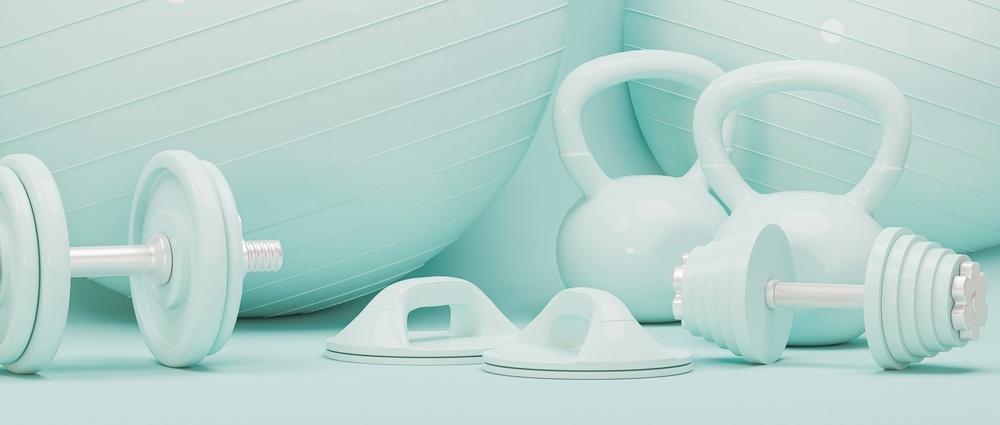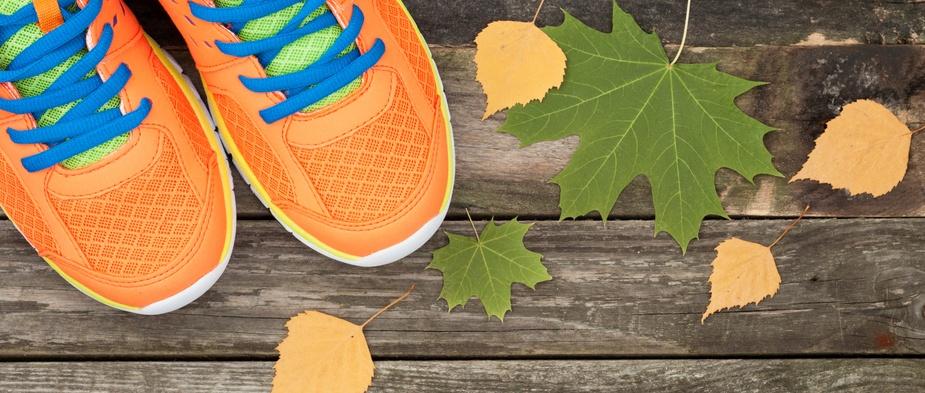
Cómo evitar lesiones durante el entrenamiento de fuerza
Peer reviewed by Dr Colin Tidy, MRCGPLast updated by Lynn StephenLast updated 1 Oct 2025
Satisface las necesidades del paciente directrices editoriales
- DescargarDescargar
- Compartir
- Idioma
- Debate
Strength training - also known as weight training, resistance training and muscle training - has a range of benefits and it's one of the best ways to stay fit and independent well into later life.
By using your body weight or equipment, you can build muscle mass, strength, and endurance. However, it's important to use the correct techniques and warm up and cool down properly. Otherwise, you may sustain injuries that can put you out of action for a long time.
En este artículo:
Seguir leyendo
Common strength training injuries
Lesiones del manguito rotador
El manguito de los rotadores es el conjunto de músculos y tendones que rodean la articulación del hombro. Una lesión provoca la inflamación o el desgarro de estos músculos y tendones, y es una causa frecuente de dolor de hombro. Esto puede dificultar la realización de tareas cotidianas que requieren el movimiento del brazo, como cepillarse el pelo o vestirse.
Rotator cuff injuries are common in athletes who play tennis and baseball, or construction workers, since the injuries are caused by repetitive overhead motions.
The two main types of rotator cuff injuries are a rotator cuff tear, which can develop after an injury or if you dislocate your shoulder, and tendinopathy, which is pain around the tendons of your rotator cuff because they cannot repair themselves. Tendinopathy is usually a result of wear and tear over time.
A doctor or physiotherapist can examine you and ask you to perform certain movements if you suspect you have injured yourself. An X-ray or ultrasound scan might be necessary to diagnose a rotator cuff injury. You might be referred for physiotherapy, given steroid injections, or require surgery, depending on the severity of the injury.
Tips for preventing rotator cuff injuries
You can reduce your chance of a rotator cuff injury by:
Having good posture in your shoulder blades.
Stretching often.
Doing simple strengthening exercises.
You might also need to make adjustments to your exercise regime if it is causing discomfort or strain to your shoulder.
Tirones de isquiotibiales
Your hamstrings are strong bands of tissue located at the back of your thigh, and injuring them causes the tendons or muscles to strain or tear. Pulling your hamstring happens when one or more of the muscles gets stretched too far. This is usually a result of sudden, powerful movements, and can occur when you are running, jumping, or lunging.
You are more likely to develop a hamstring injury if you have already had one in the past. While they typically cause relatively little pain and have a short recovery time, there are three grades of hamstring injuries. A pull can take days to heal, but a grade two or three tear might take weeks or months to heal fully.
Tips for preventing hamstring injury
You can reduce your chance of injuring your hamstrings by regularly stretching and warming up properly before any exercise.
Hernias discales
A herniated disc - sometimes called a slipped disc - is a common back injury. We have vertebral discs between each vertebral bone in our spine that act as cushions. They help to absorb impact and guide movement in the spine. When they rupture and herniate, it can be painful and may cause symptoms to travel down your legs as pressure is put on your nerves.
This type of injury can be caused by a sudden extreme movement or by repetitive poor movement when weightlifting, which is why good form and correct technique are essential.
Symptoms of a herniated disc include pain or decreased sensation in your back, buttocks, thigh, and calf. You might also experience numbness or a tingling feeling and weakness in your muscles.
Your doctor will be able to examine you and identify which area of your spine has been affected, based on the location of your symptoms. It's important to be aware of the 'red flags' for back pain to look out for - if you have any of these, you should seek urgent medical help.
Una hernia discal suele mejorar lentamente. Si el dolor es muy intenso, es posible que al principio tengas que guardar reposo, pero el ejercicio suave posterior puede ayudar al proceso de curación. Es importante empezar despacio y aumentar gradualmente la actividad física de forma segura. También pueden recetarse analgésicos.
Tendinitis
A tendon is a band of tissues attaching your muscles to your bones. Tendonitis is the irritation and inflammation caused by micro tears in your tendons, prohibiting them from performing a smooth, sliding motion as normal.
Tendonitis is commonly caused by minor stress and repetitive motions. However, it may also be a result of sudden impact or injury.
The symptoms of tendonitis include slight pain during or after a workout, which persists over time and after a period of rest. It might intensify to a burning sensation and lead to swelling or redness in the affected area. Tendonitis commonly occurs in the base of the thumb, wrist, shoulder, knee, elbow, hip, or Achilles tendon.
Tips for preventing tendonitis
You can lower your chance of tendonitis by:
Warming up properly before exercising.
Taking things slowly and gradually building up your activity.
Stretching gently and limiting repetitions of forceful movements.
It's also important that you don't ignore your pain or leave it to worsen, as pain is your body's way of telling you that something is wrong. Don't push through the pain to continue exercising. Stop, rest, and consult your doctor if it persists.
Codo de tenista
Tennis elbow is when you have pain around the outside of your elbow. Its medical term is lateral epicondylitis, and it is often caused by repetitive movements of the wrist and arm.
Despite its name, however, this injury affects more than just athletes, as it can affect anyone whose job includes those types of motions, including painters, plumbers or butchers.
El codo de golfista (epicondilitis medial) es similar al codo de tenista, pero el dolor se siente en la cara interna del codo.
El dolor del codo de tenista se produce principalmente donde los tendones de los músculos del antebrazo se unen a una protuberancia ósea en la parte exterior del codo. Es posible que el dolor se extienda al antebrazo y la muñeca.
Aunque el codo de tenista puede afectar a cualquier persona, es más frecuente en adultos de 30 a 50 años y en quienes utilizan una técnica deficiente al practicar deporte.
Tennis elbow can be treated with rest and over-the-counter medicines. However, your doctor might suggest physiotherapy, a steroid injection or surgery if your symptoms do not ease.
Cómo prevenir las lesiones musculares
Ollie Kerr, fitness coach, adds that, as well as happening as a result of performing too much exercise too quickly, these injuries can occur when you lift weights that are not appropriate for your current ability level. Any changes to the intensity level of the workout should therefore be made gradually over time.
Alongside rest, he recommends eating a good diet and remaining hydrated to speed up the recovery process. Ice, compression and elevation can also be effective techniques for the initial treatment of the majority of sport-related injuries.
Kerr says: "If you warm up suitably, work within your limitations and give yourself time to recover between exercises and workouts, injuries caused by strength training can mostly be avoided. However, they do inevitably happen from time to time."
Seguir leyendo
La importancia del calentamiento y el enfriamiento
"The aim of the warm-up is to increase heart rate and subsequent blood flow, which allows more oxygen to get to muscles to prepare them for exercise, and helps prevent injury," explains Kerr. "It is therefore extremely important to warm up prior to taking part in any form of exercise."
A study with rabbits actually supported the idea that warming up provides a protective mechanism in the muscle, which reduces the chance of injury. The study found that this protective mechanism requires greater length of stretch and force to produce a tear in the rabbit's muscle.
Del mismo modo, enfriarse después del entrenamiento es tan importante como hacerlo durante el mismo. Ayuda a regular el flujo sanguíneo, dando al corazón y a los vasos sanguíneos la oportunidad de relajarse tras la actividad física.
Kerr sugiere hacer footing en el sitio para calentar. Combínalo con movimientos y ejercicios grandes y dinámicos en los que muevas el cuerpo en toda su amplitud de movimiento. Esto prepara el cuerpo para el entrenamiento de fuerza, mientras que los ejercicios estáticos en los que mantienes una posición son más beneficiosos al final del entrenamiento.
Más consejos para prevenir lesiones durante el entrenamiento de fuerza
No te presiones más allá de lo cómodo.
Aumenta poco a poco.
Tómate descansos.
Pide ayuda si la necesitas, en lugar de luchar.
Lleva la ropa adecuada.
Aprende la técnica adecuada.
Escucha a tu cuerpo.
En busca de consejo
It might be wise to contact your doctor if you have sustained an injury, and pain or discomfort continues despite resting. Kerr also suggests consulting a qualified fitness instructor or personal trainer before starting a new strength-training routine. They can help you develop an effective and achievable strength-training programme and ensure you are doing exercises properly.
Selecciones de pacientes para Ejercicio y actividad física

Vida sana
Por qué sentarse arruina nuestra salud y cómo 22 minutos de ejercicio pueden ayudarnos
Para muchos de nosotros, una jornada laboral implica pasar varias horas seguidas sentados frente al ordenador, lo que tiene graves consecuencias para nuestra salud. Pero las investigaciones sugieren que 22 minutos de ejercicio moderado a intenso al día pueden reducir los efectos negativos para la salud de un estilo de vida sedentario.
por Victoria Raw

Vida sana
Cómo empezar una nueva rutina de ejercicios este otoño
Si ha pasado un verano lleno de barbacoas, cenas al aire libre y fines de semana al sol, es posible que, como muchos de nosotros, haya dejado de hacer ejercicio. Ahora que el tiempo refresca y los niños vuelven al colegio, es el momento perfecto del año para volver a la rutina y fijarse objetivos.
por Lynn Stephen
Seguir leyendo
Historia del artículo
La información de esta página ha sido revisada por médicos cualificados.
Next review due: 1 Oct 2028
1 Oct 2025 | Latest version
9 dic 2021 | Publicado originalmente
Autores:
Emily Jane Bashforth

Pregunte, comparta, conecte.
Explore debates, formule preguntas y comparta experiencias sobre cientos de temas de salud.

¿Se encuentra mal?
Evalúe sus síntomas en línea de forma gratuita
Sign up to the Patient newsletter
Your weekly dose of clear, trustworthy health advice - written to help you feel informed, confident and in control.
By subscribing you accept our Privacy Policy. You can unsubscribe at any time. We never sell your data.